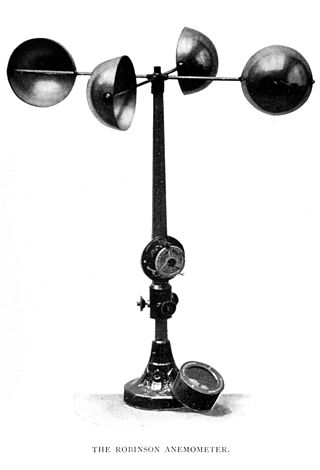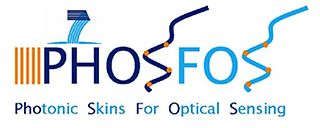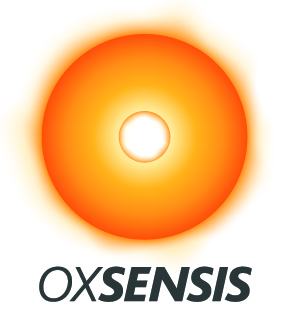
In meteorology, an anemometer is a device that measures wind speed and direction. It is a common instrument used in weather stations. The earliest known description of an anemometer was by Italian architect and author Leon Battista Alberti (1404–1472) in 1450.

Pressure measurement is the measurement of an applied force by a fluid on a surface. Pressure is typically measured in units of force per unit of surface area. Many techniques have been developed for the measurement of pressure and vacuum. Instruments used to measure and display pressure mechanically are called pressure gauges,vacuum gauges or compound gauges. The widely used Bourdon gauge is a mechanical device, which both measures and indicates and is probably the best known type of gauge.
Instrumentation is a collective term for measuring instruments, used for indicating, measuring, and recording physical quantities. It is also a field of study about the art and science about making measurement instruments, involving the related areas of metrology, automation, and control theory. The term has its origins in the art and science of scientific instrument-making.

A turbofan or fanjet is a type of airbreathing jet engine that is widely used in aircraft propulsion. The word "turbofan" is a combination of references to the preceding generation engine technology of the turbojet and the additional fan stage. It consists of a gas turbine engine which achieves mechanical energy from combustion, and a ducted fan that uses the mechanical energy from the gas turbine to force air rearwards. Thus, whereas all the air taken in by a turbojet passes through the combustion chamber and turbines, in a turbofan some of that air bypasses these components. A turbofan thus can be thought of as a turbojet being used to drive a ducted fan, with both of these contributing to the thrust.

The turbojet is an airbreathing jet engine which is typically used in aircraft. It consists of a gas turbine with a propelling nozzle. The gas turbine has an air inlet which includes inlet guide vanes, a compressor, a combustion chamber, and a turbine. The compressed air from the compressor is heated by burning fuel in the combustion chamber and then allowed to expand through the turbine. The turbine exhaust is then expanded in the propelling nozzle where it is accelerated to high speed to provide thrust. Two engineers, Frank Whittle in the United Kingdom and Hans von Ohain in Germany, developed the concept independently into practical engines during the late 1930s.
Flow measurement is the quantification of bulk fluid movement. Flow can be measured using devices called flowmeters in various ways. The common types of flowmeters with industrial applications are listed below:

The General Electric TF39 is a high-bypass turbofan engine that was developed to power the Lockheed C-5 Galaxy. The TF39 was the first high-power, high-bypass jet engine developed. The TF39 was further developed into the CF6 series of engines, and formed the basis of the LM2500 and LM6000 marine and industrial gas turbine. On September 7, 2017, the last active C-5A powered with TF39 engines made its final flight to Davis-Monthan Air Force Base for retirement. The TF39 was effectively retired, and all remaining active C-5 Galaxies are Rebuilt C-5M Super Galaxies, powered by F138-GE-102 engines.
Phosphor thermometry is an optical method for surface temperature measurement. The method exploits luminescence emitted by phosphor material. Phosphors are fine white or pastel-colored inorganic powders which may be stimulated by any of a variety of means to luminesce, i.e. emit light. Certain characteristics of the emitted light change with temperature, including brightness, color, and afterglow duration. The latter is most commonly used for temperature measurement.

A piezoelectric sensor is a device that uses the piezoelectric effect to measure changes in pressure, acceleration, temperature, strain, or force by converting them to an electrical charge. The prefix piezo- is Greek for 'press' or 'squeeze'.

The GTRE GTX-35VS Kaveri is an afterburning turbofan project under development by the Gas Turbine Research Establishment (GTRE), a lab under the Defence Research and Development Organisation (DRDO) in Bengaluru, India. An Indian design, the Kaveri was originally intended to power production models of the HAL Tejas Light Combat Aircraft (LCA) developed by Hindustan Aeronautics Limited. However, the Kaveri programme failed to satisfy the necessary technical requirements on time and was officially delinked from the Tejas programme in September 2008.
Electro-optical sensors are electronic detectors that convert light, or a change in light, into an electronic signal. These sensors are able to detect electromagnetic radiation from the infrared down to the ultraviolet wavelengths. They are used in many industrial and consumer applications, for example:

Gas Turbine Research Establishment (GTRE) is a laboratory of the Defence Research and Development Organisation (DRDO). Located in Bengaluru, its primary function is research and development of aero gas-turbines for military aircraft. As a spin-off effect, GTRE has been developing marine gas-turbines also.

A turbine blade is a radial aerofoil mounted in the rim of a turbine disc and which produces a tangential force which rotates a turbine rotor. Each turbine disc has many blades. As such they are used in gas turbine engines and steam turbines. The blades are responsible for extracting energy from the high temperature, high pressure gas produced by the combustor. The turbine blades are often the limiting component of gas turbines. To survive in this difficult environment, turbine blades often use exotic materials like superalloys and many different methods of cooling that can be categorized as internal and external cooling, and thermal barrier coatings. Blade fatigue is a major source of failure in steam turbines and gas turbines. Fatigue is caused by the stress induced by vibration and resonance within the operating range of machinery. To protect blades from these high dynamic stresses, friction dampers are used.

Brüel & Kjær is a Danish multinational engineering and electronics company headquartered in Nærum, near Copenhagen. It was the largest producer in the world of equipment for acoustic and vibrational measurements. Brüel & Kjær is a subsidiary of Spectris.

Kistler Group, headquartered in Winterthur, is an internationally active Swiss group of companies specializing in the field of measurement technology. The Kistler Group has around 2,200 employees at more than 60 locations worldwide. In 2023, it generated sales of 465 million Swiss francs. Approximately 9% of revenue flows back into research and technology every year.

Instrumentation is used to monitor and control the process plant in the oil, gas and petrochemical industries. Instrumentation ensures that the plant operates within defined parameters to produce materials of consistent quality and within the required specifications. It also ensures that the plant is operated safely and acts to correct out of tolerance operation and to automatically shut down the plant to prevent hazardous conditions from occurring. Instrumentation comprises sensor elements, signal transmitters, controllers, indicators and alarms, actuated valves, logic circuits and operator interfaces.

PHOSFOS is a research and technology development project co-funded by the European Commission.
Non-intrusive stress measurement (system), or NSMS, is a method for determining dynamic blade stresses in rotating turbomachinery. NSMS is also known by the names "blade tip timing" (BTT), "arrival time analysis" (ATA), "blade vibration monitoring" (BVM), Beruehrungslose Schaufel Schwingungsmessung (BSSM), and "blade health monitoring" (BHM). NSMS uses externally mounted sensors to determine the passing times of turbomachinery blades. The passing times after conversion to deflections, can be used to measure each blade's vibratory response characteristics such as amplitude/stress, phase, frequency and damping. Since every blade is measured, stage effects such as flutter, blade mistuning, and nodal diameter can also be characterized. The measurement method has been used successfully in all stages of the gas turbine engine and on other turbo-machinery equipment ranging from turbochargers to rocket pumps. The ability to apply the technology to a given situation is dependent upon a sensor type that can meet the environmental requirements.
Tong Sun is a Professor of Sensor Engineering and Director of the Research Centre for Photonics and Instrumentation at City, University of London. She was awarded the Royal Academy of Engineering Silver Medal in 2016 and awarded an Order of the British Empire (OBE) in the 2018 Birthday Honours. In 2020 she was elected Fellow of the Royal Academy of Engineering.













